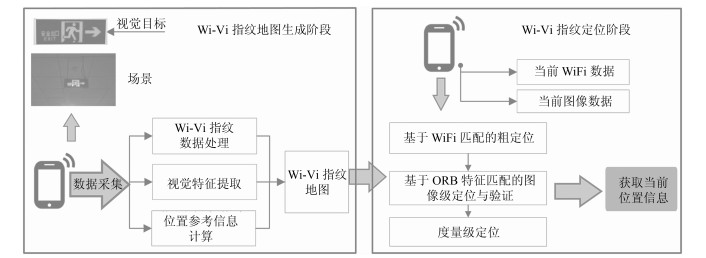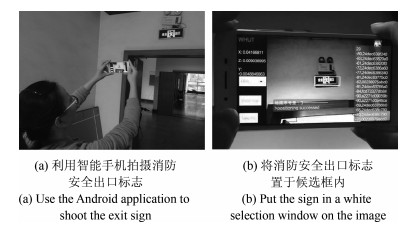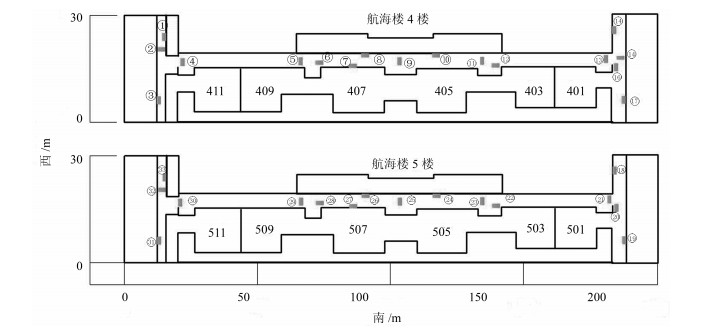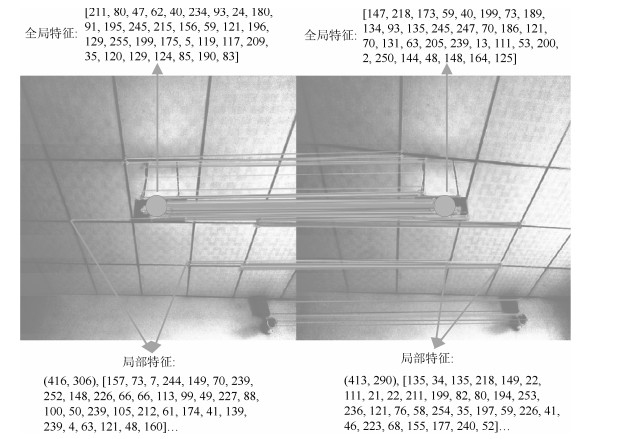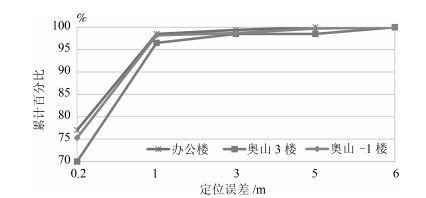-
摘要: 室内定位是近些年国内外研究的热点, 但是目前的室内定位技术在适用性、稳定性和推广性方面仍然存在诸多问题.针对目前室内定位技术的不足, 面向公共室内场景的人员自定位问题, 本文创新性地提出以室内广泛存在、均匀分布的消防安全出口标志为路标(Landmark), 提出以Wi-Vi指纹-WiFi与视觉(Vision)信息相融合的指纹, 为位置表征的多尺度定位方法.该方法首先利用室内广泛存在的WiFi无线信号进行粗定位, 缩小定位范围; 然后在WiFi定位的基础上通过视觉全局和局部特征匹配实现图像级定位和验证; 最后参考消防安全出口标志的空间坐标精确计算用户的位置信息.实验中, 通过市面上流行的不同型号智能手机在12 000平米办公楼和4万平米商场分别进行实地定位测试.测试结果表明:该方法可以达到实时定位的要求, 图像级定位准确率均在97 %以上, 平均定位误差均在0.5米以下.本文所提出的基于Wi-Vi指纹智能手机定位方法为高精度室内定位问题建议了一种新的解决思路.Abstract: Indoor positioning is a hot research topic in recent years. Existing methods still have the problems of poor applicability and low stability in different indoor situations. Aiming at solving the localization problem for public indoor environment, this paper for the first time proposes to use exit signs as landmarks that are widely distributed in the indoor environment. By applying these landmarks, a novel multi-scale positioning method is proposed based on Wi-Vi Fingerprint - WiFi and vision integrated fingerprint. The proposed method consists of coarse positioning from WiFi matching, image-level positioning and verification from holistic and local visual feature matching, and positioning refinement from metric positioning based on the space coordinates of exit sign. The proposed method has been tested in an indoor office building of 12 000 square meters and a shopping mall of 40 000 square meters, respectively, by using different smartphones. Experimental results show that the proposed Wi-Vi fingerprint method can achieve real-time positioning with more than 97 % accuracy rate for image-level positioning. In both test scenarios, the average positioning errors are less than half meters. The proposed Wi-Vi fingerprint method suggests a new solution to accurate indoor positioning.
-
Key words:
- Indoor positioning /
- WiFi fingerprint /
- vision-based positioning /
- multi-scale positioning
-
网络控制系统(Networked control systems, NCSs)是一种空间分布式系统, 其控制回路中的传感器、控制器、执行器由有限带宽的通信网络相连接[1-3].与传统的控制系统相比, NCSs具有可靠性高、易于维护和扩展、能实现信息资源共享以及远程控制等优点[4-6].但网络特有的属性例如数据丢包、网络时滞等问题也给控制系统带来了不可忽视的负面影响.其中数据丢包是造成系统性能恶化甚至破坏系统稳定性的主要因素.很多学者研究了具有丢包的NCS的稳定性分析和控制器设计问题并得到了很有意义的结论[7-12], 其中文献[7]运用随机丢包模型研究了NCS的$H_\infty$控制问题.文献[8]研究了具有马尔科夫丢包的量化系统的预测控制综合问题.文献[9]研究了具有丢包和多包传输的NCS的稳定性问题.文献[10]研究了有界丢包网络环境下的多包不确定系统的鲁棒预测控制问题.然而文献[7-10]仅考虑了丢包存在于传感器与控制器之间即单边丢包的情况, 由于丢包往往同时存在于传感器与控制器、控制器与执行器之间, 即双边丢包, 因此文献[7-10]的结果有一定局限性.文献[11]考虑任意有界丢包过程, 解决了具有输入约束和状态约束的模型预测控制综合问题.文献[12]考虑有界丢包和马尔科夫丢包两种情况, 分析了系统的状态反馈镇定问题.
近年来, 由于有限精度算法在数字计算机中的应用, 大量学者开始研究量化反馈控制问题[13-22].在众多研究成果中, 主要采用了静态量化[23-27]和动态量化[28-32]两种量化方法.由于后者能动态调整量化水平而增加吸引域, 因此在处理系统稳定性问题上更具有优势.然而, 由于缺乏统一的研究方法导致其在控制性能问题上仍具有局限性.文献[23]基于模态依赖的对数量化器, 提出了马尔科夫非线性系统的量化动态输出反馈控制器设计方法.文献[24]研究了单输入单输出线性时不变系统的量化反馈镇定问题, 证明了对数量化器对于二次型稳定系统的必要性.文献[25]综合研究了关于带有对数量化器的单输入单输出系统和多输入多输出系统的状态反馈和输出反馈镇定问题, 文中量化误差被处理为区间不确定性, 由此将量化反馈控制问题转化为鲁棒控制问题.在文献[25]的基础上, 文献[26]提出了量化依赖Lyapunov函数方法, 用以处理单输入和多输入量化反馈系统的镇定问题和$H_\infty$控制问题.
本文考虑双边丢包的情况, 给出了单输入和多输入两种情况下的量化反馈网络系统的保成本控制器设计方法.在分别分析双边丢包过程的基础上, 建立了带有对数量化器的NCS数学模型, 进而将具有丢包和量化的NCS的镇定问题转化为镇定一系列系统的鲁棒控制问题.基于线性矩阵不等式(Linear matrix inequality, LMI)技术, 得到了保成本控制器的设计方法.本文最典型的特点是运用量化依赖Lyapunov函数得到了相较于文献[25]中二次型Lyapunov函数方法保守性更弱的结果.
注1. 本文中, $I$表示相应维数的单位阵, ${\bf R}^{n}$表示$n$维欧氏空间(${\bf R}$即${\bf R}^{1}$).对于向量${\pmb x}$, ${\pmb u}$和矩阵$\mathscr{W}$, $\mathscr{R}$, 有$\|{\pmb x}\|^2_{\mathscr{W}}:={\pmb x}^{\rm T}{\mathscr{W}}{\pmb x}$, $\|{\pmb u}\|^2_{\mathscr{R}}:={\pmb u}^{\rm T}{\mathscr{R}}{\pmb u}$.在对称矩阵中, 用星号$*$表示对称部分.
1. 问题阐述
假设被控对象为如下线性离散时不变系统:
$ {\pmb x}(k+1)=A{\pmb x}(k)+Bu(k) $
(1) 其中, ${\pmb x}(k)\in{\bf R}^{n}$和$u(k)\in{\bf R}$分别表示可测系统状态和系统输入. NCS如图 1所示.考虑量化状态反馈为
$ \breve{u}(k)=f(\breve{v}(k)) $
(2) $ \breve{v}(k)=K \breve{\pmb x}(k) $
(3) 其中, $\breve{u}(k) $, $\breve{v}(k) $, $ {\breve{\pmb x}}(k) $分别表示量化器输出、量化器输入、控制器输入, $K$表示状态反馈增益.定义静态时不变对数量化器为[24-25]
$ \begin{align} f(\breve{v})= \begin{cases} \upsilon_i,&\mbox{若}~ \it \dfrac{\rm 1}{\rm 1+ \delta}\upsilon_i <\breve{v}\leq \dfrac{\rm1}{\rm1-\delta}\upsilon_i, \\ &\quad\, \breve{v}>\rm0\\ 0, &\mbox{若}~\it \breve{v}=\rm0\\ -f(-\breve{v}), &\mbox{若}~ \it \breve{v}<\rm0 \end{cases} \end{align} $
(4) 由上式可知, 量化器对称, 即$f(-\breve{v})=-f(\breve{v}) $.
量化水平集为
$ \begin{align} &\mathscr{V}=\{\pm \upsilon_{i}:\upsilon_{i}=\rho^{i}\upsilon_0, i=0, \pm1, \pm2, \cdots\}\cup \{0\}, \nonumber\\ &\qquad\qquad\qquad\qquad\qquad\qquad\quad 0<\rho<1, ~~\upsilon_0>0 \end{align} $
(5) 其中, $\rho$表示量化器密度. $\delta={(1-\rho)}/{(1+\rho)}$.假设$\rho$已知, 则$\delta$已知, 并且满足$0<\delta<1$.定义量化误差为
$ \begin{align} e(k)=&\ \breve{u}(k)-\breve{v}(k)=\nonumber\\ &\ f(K{ {\breve{\pmb x}}}(k))-K{ {\breve{\pmb x}}}(k)=\Delta(k)K{ {\breve{\pmb x}}}(k) \end{align} $
(6) 其中, $\Delta(k)\in[-\delta, \delta]$.
定义1[4].令 $\mathscr{J}:=\{j_1, j_2, \cdots\}$ 表示从传感器到控制器成功传输数据的时间点序列, 令 $\mathscr{I}:=\{i_1, i_2, \cdots\}$ 表示从控制器到执行器成功传输数据的时间点序列, $\mathscr{J}$ , $\mathscr{I}$ 都是序列 $\{0, 1, 2, 3, \cdots\}$ 的子序列.令 $d_1:= {\rm max}_{j_l\in\mathscr{J}}(j_{l+1}-j_l)$ 为数据从传感器到控制器的丢包上界, $ d_2:= {\rm max}_{i_l\in\mathscr{I}}(i_{l+1}-i_l) $ 为数据从控制器到执行器的丢包上界.有界丢包过程定义为 $\{\eta(j_l):=j_{l+1}-j_l|{j_l}\in\mathscr{J}\}$ , $\{\zeta(i_l):= i_{l+1}-{i_l}|{i_l}$ $\in\mathscr{I}\}$ , 其中, $\eta(j_l) $ 和 $\zeta(i_l)$ 分别从 $\mathscr{D}_1:=\{1, 2, \cdots, d_1\}$ 和 $\mathscr{D}_2:=\{1, 2, \cdots, d_2\}$ 中任意取值.
只有部分成功传输的数据能影响闭环系统, 因此引入排序因子${\rm {ord}}\{\cdot\}$来定义这部分数据.对于任意整数序列, 排序因子在不增加或减少任何元素的情况下, 对原有整数序列按从小到大的顺序进行排序, 将得到的序列称为有序序列.令$\mathscr{S}={\rm {ord}}\{\mathscr{J}$, $\mathscr{I}\}$, 其中, 对于两个不相等的正整数$a$, $b$, 如果出现$i_a$ $= j_b$的情况, 则在$\mathscr{S}$中$j_b$位于$i_a$之前.因此有序序列$\sigma= \{\nu_1, \mu_1, \nu_2, \mu_2, \cdots\}\subseteq\mathscr{S}$存在且唯一, 使$\{\nu_1, \nu_2, \cdots\}\in\mathscr{J}$, $\{\mu_1, \mu_2, \cdots\}\in\mathscr{I}$, 有序序列$\sigma$为实际影响闭环系统的时间序列.
引理1[11].对于定义1中的丢包过程, 有$\mu_r -$ $\nu_r+1\in \mathscr{D}_2$, $\mu_{r+1}-\nu_r\in\mathscr{D}$, 其中, $\mathscr{D}:=\{1, 2, \cdots$, $d_1$$+d_2-1\}$.
文中控制器为$\breve{u}=f(\breve{v})=f(K {\breve{\pmb x}}) $.在每个$j_l$时刻, 无论控制器是否成功从传感器接收到数据, 认为$\breve{u}(j_l)=f(K {\breve{\pmb x}}(j_l))=f(K{\pmb x}(j_l)) $.对于所有满足条件$j_l\leq k<j_{l+1}$的$k$时刻, 执行器收到数据$\breve{u}(k)$ $=$ $\breve{u}(j_l) $.系统闭环模型为
$ \begin{align} &\mu_r-\nu_r+1=t:\nonumber\\ &\begin{cases} \!{\pmb x}(\mu_{r+1})=\tilde{A}^1{\pmb x}(\mu_r)+\tilde{B}_1{\pmb x}(\nu_r), &\mu_{r+1}-\mu_r=1\\ \!{\pmb x}(\mu_{r+1})=\tilde{A}^2{\pmb x}(\mu_r)+\tilde{B}_2{\pmb x}(\nu_r), &\mu_{r+1}-\mu_r=2\\ \!~~~~~~~~~~~~~~~~~~~~~~~\vdots &~~~~~~~~~~\vdots\\ \!{\pmb x}(\mu_{r+1})=\tilde{A}^l{\pmb x}(\mu_r)+\tilde{B}_l{\pmb x}(\nu_r), &\mu_{r+1}-\mu_r=l \end{cases}\nonumber \end{align} $
其中, $t\in \mathscr{D}_2$, $l\in \mathscr{D}(t)$, $\tilde{A}^l=A^l$, $\tilde{B}_l={B}_l(1+\Delta(\mu_r))K$.
上式可以等价为如下模型:
$ \begin{align} {\pmb x}(k+1)=&\ A^{k-\mu_r+1}{\pmb x}(\mu_r)\, +\nonumber\\ &\ B_{k-\mu_r+1}(1+\Delta(k))K{\pmb x}(\nu_r) \end{align} $
(7) 其中, $\mu_r\leq k<\mu_{r+1}$, $r\geq1$, $B_j=\sum_{s=0}^{j-1}A^sB$, $j$ $\geq$ $1$.
取如下扩展状态变量:
$ \begin{align*} &{\pmb z}(k)=\nonumber\\ &\ \, [{\pmb x}^{\rm T}(k)~ {\pmb x}^{\rm T}(k-1)~ {\pmb x}^{\rm T}(k-2)~ \cdots~ {\pmb x}^{\rm T}(k-d_2+1)]^{\rm T} \end{align*} $
则系统(7)可改写为如下的等价模型:
$ \begin{align} &{\pmb z}(\mu_{r+1})=\sum\limits_{t\in\mathscr{D}_2}\sum\limits_{l\in\mathscr{D}(t)}\lambda_{t} (\mu_r)\omega_l(\mu_r)\Phi_{lt}{\pmb z}(\mu_r) \end{align} $
(8) 其中, $\Phi_{lt}=[[\Psi_{lt}^{1}~~\Psi_{lt}^{2}~~ \cdots~~ \Psi_{lt}^{d_2}]^{\rm T}~~~[I ~0]^{\rm T}]^{\rm T}$, $\Phi_{lt}\in{\bf R}^{(d_2n)\times(d_2n)}$, $\Psi_{lt}^{s}\in{\bf R}^{\left(\min\{l, d_2\}n\right)\times n}$, $s\in\mathscr{D}_2 $.
如果$t=1$,
$ \begin{align*} & \Psi_{lt}^{s}=\\ &\ \ \begin{cases} [\tilde{A}_1^{\rm T}+\tilde{B}_1^{\rm T} ~~ \tilde{A}_2^{\rm T}+\tilde{B}_2^{\rm T} ~~ \cdots ~~ \tilde{A}_{x}^{\rm T}+\tilde{B}_{x}^{\rm T}]^{\rm T},&s=1\\ 0,&s\neq1 \end{cases} \end{align*} $
如果$t\neq1$,
$ \begin{align*} &\Psi_{lt}^{s}= \begin{cases} [\tilde{A}_1^{\rm T} ~~ \tilde{A}_2^{\rm T} ~~ \cdots ~~ \tilde{A}_{x}^{\rm T}]^{\rm T},&s=1\\ [\tilde{B}_1^{\rm T} ~~ \tilde{B}_2^{\rm T} ~~ \cdots ~~ \tilde{B}_{x}^{\rm T}]^{\rm T},&s=t\\ 0,&s\neq1, t \end{cases} \end{align*} $
其中, $x=\min\{l, d_2\}$, $\tilde{A}_\alpha=A^{l+1-\alpha}$, $\tilde{B}_\alpha=$ $B_{l+1-\alpha}(1+\Delta(k))K$, $\alpha\in\{1, 2, \cdots, \min\{l, d_2\}\}$.注意到如果有$\mu_r-\nu_r+1=t$, 那么$\lambda_{t}(\mu_r)=1$; 如果有$\mu_{r+1}-\mu_r=l$, 那么$\omega_{l}(\mu_r)=1$, 否则$\lambda_{t}(\mu_r)=$ $\omega_{l}(\mu_r)$ $=0$.
2. 主要结果
2.1 单输入情况
本文采用量化依赖Lyapunov函数方法设计保成本控制器及分析具有双边丢包量化反馈系统的稳定性.构造如下形式的Lyapunov函数:
$ V({\pmb x}(\mu_r))={\pmb x}^{\rm T}(\mu_r)P(\Delta(\mu_r)){\pmb x}(\mu_r) $
(9) 其中, $P(\Delta(\mu_r)) $时变且依赖于量化误差$\Delta(\mu_r) $, 有如下形式:
$ P(\Delta(\mu_r))=\frac{\delta-\Delta(\mu_r)}{2\delta}P_1+\frac{\delta+\Delta(\mu_r)}{2\delta}P_2\nonumber $
其中, $P_1$和$P_2$正定.保成本性能指标为
$ J=\sum\limits_{\tau=0}^{\infty}[\|{\pmb x}(\mu_{r+\tau})\|^2_{\mathscr{W}}+\|u(\mu_{r+\tau})\|^2_{\mathscr{R}}]\nonumber $
其中, $u(\mu_{r+\tau})=f(v(\mu_{r+\tau})) $, $v(\mu_{r+\tau})=K{\pmb x}(\mu_{r+\tau}) $, ${\pmb x}(\mu_{r+\tau})=\Theta_t{\pmb z}(\mu_{r+\tau}) $, $\Theta_t$不确定但可表示为$\Theta_t=[\Theta_t^{1}~~ \Theta_t^{2}~~ \cdots~~ \Theta_t^{d_2}]$, $\Theta_t^{s}\in{\bf R}^{n\times n}$, $s\in{\mathscr{D}_2}$, $\Theta_t^{s}=0$, $s$ $\neq$ ${t}$, $\Theta_t^{t}=I$.设计保证闭环系统渐近稳定的保成本控制器, 有如下定理:
定理1. 考虑如图 1中的离散时间系统及对数量化器(4), 如果存在矩阵$Q_1>0$, $Q_2>0$, $Y$, $G_{lt}$和$\gamma$满足如下LMIs:
$ \begin{align} &\left[\begin{array}{cccccc} G_{lt}^{\rm T}+G_{lt}-Q_{1}& *& * & * \\ \Phi_{lt}G_{lt}& Q_{i}& * & * \\ \mathscr{W}^\frac{1}{2}G_{lt}^1& 0& \gamma I& * \\ \mathscr{R}^\frac{1}{2}(1-\delta)[Y~Y~\cdots~Y]& 0& 0& \gamma I \end{array}\right]>0, \nonumber \\ &\qquad\qquad\qquad\qquad\quad\ \ t\in{\mathscr{D}_2}, ~l\in{\mathscr{D}(t)}, ~i\in\{1, 2\}\end{align} $
(10) $ \begin{align} &\left[\begin{array}{cccccc} G_{lt}^{\rm T}+G_{lt}-Q_{2}& *& * & * \\ \Phi_{lt}G_{lt}& Q_{i}& * & * \\ \mathscr{W}^\frac{1}{2}G_{lt}^1& 0& \gamma I& * \\ \mathscr{R}^\frac{1}{2}(1+\delta)[Y~Y~\cdots~Y]& 0& 0& \gamma I \end{array}\right]>0, \nonumber\\ &\qquad\qquad\qquad\qquad\quad\ \ t\in{\mathscr{D}_2}, ~l\in{\mathscr{D}(t)}, ~i\in\{1, 2\} \end{align} $
(11) 那么, 存在保成本控制器(2)使闭环系统(8)渐近稳定, 且量化状态反馈控制器为
$ u(\nu_r)=(1+\Delta(\mu_r))YG^{-1}{\pmb x}(\mu_r) $
(12) 证明.闭环系统(8)渐近稳定, 如果有
$ \begin{align} &\Delta{V({\pmb z}(\mu_{r+\tau}))}=V({\pmb z}(\mu_{r+\tau+1}))-V({\pmb z}(\mu_{r+\tau}))=\nonumber\\ &\ \ \, {\pmb z}^{\rm T}(\mu_{r+\tau})\sum\limits_{t\in{\mathscr{D}_2}}\sum\limits_{l\in{\mathscr{D}(t)}}\lambda_t(\mu_{r+\tau})\omega_l(\mu_{r+\tau})\, \times\notag\\ &\ \ (\Phi^{\rm T}_{lt}P(\Delta(\mu_{r+\tau+1}))\Phi_{lt}-P(\Delta(\mu_{r+\tau}))) {\pmb z}(\mu_{r+\tau})=\nonumber\\ &\ \ {\pmb z}^{\rm T}(\mu_{r+\tau})\Bigg(\sum\limits_{t\in{\mathscr{D}_2}}\sum\limits_{l\in{\mathscr{D}(t)}}\lambda_t(\mu_{r+\tau})\omega_l(\mu_{r+\tau})(\Phi^{\rm T}_{lt}\, \times\nonumber\\ &\ \ (\frac{\delta-\Delta(\mu_{r+\tau+1})}{2\delta}P_1+\frac{\delta+\Delta(\mu_{r+\tau+1})}{2\delta}P_2)\Phi_{lt}\, -\nonumber\\ &\ \ (\frac{\delta-\Delta(\mu_{r+\tau})}{2\delta}P_1\!+\!\frac{\delta+\Delta(\mu_{r+\tau})}{2\delta}P_2))\!\Bigg){\pmb z}(\mu_{r+\tau})<\nonumber \\ &\ \, -({\pmb x}^{\rm T}(\mu_{r+\tau})\mathscr{W}{\pmb x}(\mu_{r+\tau})\, +\nonumber\\ &\ \ u^{\rm T}(\mu_{r+\tau})\mathscr{R}u(\mu_{r+\tau}))<\notag\\ &\ \, -{\pmb z}^{\rm T}(\mu_{r+\tau})([I~ 0~ \cdots~ 0]^{\rm T}\mathscr{W}[I~ 0~ \cdots~ 0]\, +\nonumber\\ &\ \ (1+\Delta(\mu_{r+\tau}))^2\Theta^{\rm T}K^{\rm T}\mathscr{R}K\Theta){\pmb z}(\mu_{r+\tau})<0 \end{align} $
(13) 由此得到如下不等式:
$ \begin{align} &{\pmb x}^{\rm T}(\mu_{r+\tau})\mathscr{W}{\pmb x}(\mu_{r+\tau})+u^{\rm T}(\mu_{r+\tau})\mathscr{R}u(\mu_{r+\tau})<\nonumber\\ &\qquad -\Delta{V({\pmb z}(\mu_{r+\tau}))} \end{align} $
(14) 将式(14)从$\tau=0$到$\tau=\infty$累加, 得到性能指标满足$J=\sum_{\tau=0}^{\infty}[\|{\pmb x}(\mu_{r+\tau})\|^2_{\mathscr{W}}+\|u(\mu_{r+\tau})\|^2_{\mathscr{R}}]\leq V(z(\mu_r)) $以及
$ \begin{align} &\Phi^{\rm T}_{lt}(\frac{\delta-\Delta(\mu_{r+\tau+1})}{2\delta}P_1+\frac{\delta+\Delta(\mu_{r+\tau+1})}{2\delta}P_2)\Phi_{lt}\, -\nonumber\\ &\qquad (\frac{\delta-\Delta(\mu_{r+\tau})}{2\delta}P_1+\frac{\delta+\Delta(\mu_{r+\tau})}{2\delta}P_2)\, +\nonumber\\ &\qquad [I~ 0~ \cdots~ 0]^{\rm T}\mathscr{W}[I~ 0~ \cdots~ 0]+(1+\Delta(\mu_{r+\tau}))^2\, \times\nonumber\\ &\qquad \Theta^{\rm T}K^{\rm T}\mathscr{R}K\Theta<0, \quad t\in{\mathscr{D}_2}, ~ l\in{\mathscr{D}(t)} \end{align} $
(15) 考虑如下四种情形:
情形1. $\Delta(\mu_{r+\tau})=-\delta$, $\Delta(\mu_{r+\tau+1})=-\delta$;
情形2. $\Delta(\mu_{r+\tau})=-\delta$, $\Delta(\mu_{r+\tau+1})=\delta$;
情形3. $\Delta(\mu_{r+\tau})=\delta$, $\Delta(\mu_{r+\tau+1})=-\delta$;
情形4. $\Delta(\mu_{r+\tau})=\delta$, $\Delta(\mu_{r+\tau+1})=\delta$.
对于情形1和情形2, 由式(15), 得
$ \begin{align} &\Phi^{\rm T}_{lt}P_i\Phi_{lt}-P_1+[I~ 0~ \cdots~ 0]^{\rm T}\mathscr{W}[I~ 0~ \cdots~ 0]\, +\nonumber\\ &\qquad (1-\delta)^2\Theta^{\rm T}K^{\rm T}\mathscr{R}K\Theta<0, \nonumber\\ &\qquad\qquad\qquad\qquad t\in{\mathscr{D}_2}, ~l\in{\mathscr{D}(t)}, ~i\in \{1, 2\} \end{align} $
(16) 对于情形3和情形4, 同样由式(15), 得
$ \begin{align} &\Phi^{\rm T}_{lt}P_i\Phi_{lt}-P_2+[I~ 0~ \cdots~ 0]^{\rm T}\mathscr{W}[I~ 0~ \cdots~ 0]\, +\nonumber\\ &\qquad (1+\delta)^2\Theta^{\rm T}K^{\rm T}\mathscr{R}K\Theta<0, \nonumber\\ &\qquad\qquad\qquad\qquad t\in{\mathscr{D}_2}, ~l\in{\mathscr{D}(t)}, ~i\in \{1, 2\} \end{align} $
(17) 写出式(16)和式(17)包含的所有情况:
$ \Phi^{\rm T}_{lt}P_1\Phi_{lt}-P_1+[I~ 0~ \cdots~ 0]^{\rm T}\mathscr{W}[I~ 0~ \cdots~ 0]\, +\nonumber\\ \;\;\;\;\;\;\ \ (1-\delta)^2\Theta^{\rm T}K^{\rm T}\mathscr{R}K\Theta<0, \quad t\in{\mathscr{D}_2}, ~ l\in{\mathscr{D}(t)} $
(18) $ \Phi^{\rm T}_{lt}P_2\Phi_{lt}-P_1+[I~ 0~ \cdots~ 0]^{\rm T}\mathscr{W}[I~ 0~ \cdots~ 0]\, +\nonumber\\ \;\;\;\;\;\;\ \ (1-\delta)^2\Theta^{\rm T}K^{\rm T}\mathscr{R}K\Theta<0, \quad t\in{\mathscr{D}_2}, ~l\in{\mathscr{D}(t)} $
(19) $ \Phi^{\rm T}_{lt}P_1\Phi_{lt}-P_2+[I~ 0~ \cdots~ 0]^{\rm T}\mathscr{W}[I~ 0~ \cdots~ 0]\, +\nonumber\\ \;\;\;\;\;\;\ \ (1+\delta)^2\Theta^{\rm T}K^{\rm T}\mathscr{R}K\Theta<0, t\in{\mathscr{D}_2}, ~ l\in{\mathscr{D}(t)} $
(20) $ \Phi^{\rm T}_{lt}P_2\Phi_{lt}-P_2+[I~ 0~ \cdots~ 0]^{\rm T}\mathscr{W} [I~ 0~ \cdots~ 0]\, +\nonumber\\ \;\;\;\;\;\;\ \ (1+\delta)^2\Theta^{\rm T}K^{\rm T}\mathscr{R}K\Theta<0, t\in{\mathscr{D}_2}, ~ l\in{\mathscr{D}(t)} $
(21) 对任意$\Delta(\mu_{r+\tau})\in [-\delta, \delta]$, $\Delta(\mu_{r+\tau+1})\in [-\delta$, $\delta]$, 将式(18)和式(19)分别乘以$(\delta$ $-$ $\Delta(\mu_{r+\tau+1}))/$ ${(2\delta)}$和${(\delta+\Delta(\mu_{r+\tau+1}))}/{(2\delta)}$, 然后将其结果相加, 得
$ \begin{align} &\Phi^{\rm T}_{lt}P(\Delta(\mu_{r+\tau+1}))\Phi_{lt}-P_1+[I~ 0~ \cdots~ 0]^{\rm T}\mathscr{W}\, \times\nonumber\\ &\qquad [I~ 0~ \cdots~ 0]+(1-\delta)^2\Theta^{\rm T}K^{\rm T} \mathscr{R}K\Theta<0, \nonumber\\ &\qquad\qquad\qquad\qquad\qquad\qquad\ \ t\in{\mathscr{D}_2}, ~ l\in{\mathscr{D}(t)} \end{align} $
(22) 对式(20)和式(21)重复上述步骤, 得
$ \begin{align} &\Phi^{\rm T}_{lt}P(\Delta(\mu_{r+\tau+1}))\Phi_{lt}-P_2+[I~ 0~ \cdots~ 0]^{\rm T}\mathscr{W}\, \times\nonumber\\ &\qquad [I~ 0~ \cdots~ 0]+(1+\delta)^2\Theta^{\rm T}K^{\rm T} \mathscr{R}K\Theta<0, \nonumber\\ &\qquad\qquad\qquad\qquad\qquad\qquad\ \ t\in{\mathscr{D}_2}, ~l\in{\mathscr{D}(t)} \end{align} $
(23) 将式(22)和式(23)分别乘以${(\delta-\Delta(\mu_{r+\tau}))}/$ ${(2\delta)}$和${(\delta+\Delta(\mu_{r+\tau}))}/{(2\delta)}$, 然后将其结果相加, 得
$ \begin{align} &\Phi^{\rm T}_{lt}P(\Delta(\mu_{r+\tau+1}))\Phi_{lt}-P(\Delta(\mu_{r+\tau}))\, + \nonumber\\ &\qquad [I~ 0~ \cdots~ 0]^{\rm T}\mathscr{W}[I~ 0~ \cdots~ 0]\, +\nonumber\\ &\qquad (1+2\Delta(\mu_{r+\tau})+\delta^2)\Theta^{\rm T}K^{\rm T}\mathscr{R}K\Theta<0, \nonumber\\ &\qquad\qquad\qquad\qquad\qquad\qquad\ \ t\in{\mathscr{D}_2}, ~l\in{\mathscr{D}(t)} \end{align} $
(24) 注意到$(\Delta(\mu_{r+\tau}))^2<\delta^2$, 因此得到
$ \begin{align} &\Phi^{\rm T}_{lt}P(\Delta(\mu_{r+\tau+1}))\Phi_{lt}-P(\Delta(\mu_{r+\tau}))\, +\nonumber\\ &\qquad [I~ 0~ \cdots~ 0]^{\rm T}\mathscr{W}[I~ 0~ \cdots~ 0]\, +\nonumber\\ &\qquad (1+\Delta(\mu_{r+\tau}))^2\Theta^{\rm T}K^{\rm T}\mathscr{R}K\Theta<0, \nonumber\\ &\qquad\qquad\qquad\qquad\qquad\quad\ \ t\in{\mathscr{D}_2}, ~ l\in{\mathscr{D}(t)} \end{align} $
(25) 式(25)和式(13)等价.
令$K=YG^{-1}$, $Q_i=\gamma P_i^{-1}$, $i\in\{1, 2\}$, 以及
$ \begin{align} &G_{lt}= \left[\begin{array}{ccccc} G_{lt}^{11} &G_{lt}^{12} &\cdots &G_{lt}^{1, d_2} \\ G_{lt}^{21} &G_{lt}^{22} &\cdots &G_{lt}^{2, d_2} \\ \vdots &\vdots &\ddots &\vdots \\ G_{lt}^{d_2, 1} &G_{lt}^{d_2, 2} &\cdots &G_{lt}^{d_2, d_2} \end{array}\right], ~~ G_{lt}^{ts}=G\nonumber \\ &\qquad\qquad\qquad\qquad\qquad\qquad\quad t, s\in\mathscr{D}_2, ~ l\in{\mathscr{D}(t)}\nonumber \end{align} $
其中, 矩阵$G_{lt}$中的每一块子矩阵具有相同维数.在式(16)和式(17)两边分别乘以和$\gamma^{-1/2}G_{lt}$, 得
$ \begin{align} &G^{\rm T}_{lt}\Phi^{\rm T}_{lt}Q^{-1}_i\Phi_{lt}G_{lt}-\gamma^{-1}G^{\rm T}_{lt}P_1G_{lt}+\gamma^{-1}{G_{lt}^1}^{\rm T}\mathscr{W}G_{lt}^1+\nonumber\\ &\qquad \gamma^{-1}(1-\delta)^2[Y~Y~\cdots~Y]^{\rm T}\mathscr{R}[Y~Y~\cdots~Y]<0, \nonumber\\ &\qquad\qquad\qquad\qquad\quad\ \ \, t\in{\mathscr{D}_2}, ~l\in{\mathscr{D}(t)}, ~i\in\{1, 2\}\end{align} $
(26) $ \begin{align} &G^{\rm T}_{lt}\Phi^{\rm T}_{lt}Q^{-1}_i\Phi_{lt}G_{lt}-\gamma^{-1}G^{\rm T}_{lt}P_2G_{lt}+\gamma^{-1}{G_{lt}^1}^{\rm T}\mathscr{W}G_{lt}^1+\nonumber\\ &\qquad c\gamma^{-1}(1+\delta)^2[Y~Y~\cdots~Y]^{\rm T}\mathscr{R}[Y~Y~\cdots~Y]<0, \nonumber\\ &\qquad\qquad\qquad\qquad\quad\ \ \, t\in{\mathscr{D}_2}, ~l\in{\mathscr{D}(t)}, ~i\in\{1, 2\} \end{align} $
(27) 由$\gamma^{-1}G^{\rm T}_{lt}P_iG_{lt}\geq G^{\rm T}_{lt}+G_{lt}-Q_i$, $i\in\{1, 2\}$及Schur补引理, 上述两式可转化为如下LMIs:
$ \begin{align} &\left[\begin{array}{cccccc} G_{lt}^{\rm T}+G_{lt}-Q_{1}& *& * & * \\ \Phi_{lt}G_{lt}& Q_{i}& * & * \\ \mathscr{W}^\frac{1}{2}G_{lt}^1& 0& \gamma I& * \\ \mathscr{R}^\frac{1}{2}(1-\delta)[Y~Y~\cdots~Y]& 0& 0& \gamma I \end{array}\right]>0, \nonumber\\ &\qquad\qquad\qquad\qquad\quad\ \ \, t\in{\mathscr{D}_2}, ~l\in{\mathscr{D}(t)}, ~i\in\{1, 2\}\nonumber\end{align} $
$ \begin{align} &\left[\begin{array}{cccccc} G_{lt}^{\rm T}+G_{lt}-Q_{2}& *& * & * \\ \Phi_{lt}G_{lt}& Q_{i}& * & * \\ \mathscr{W}^\frac{1}{2}G_{lt}^1& 0& \gamma I& * \\ \mathscr{R}^\frac{1}{2}(1+\delta)[Y~Y~\cdots~Y]& 0& 0& \gamma I \end{array}\right]>0, \nonumber\\ &\qquad\qquad\qquad\qquad\quad\ \ \, t\in{\mathscr{D}_2}, ~ l\in{\mathscr{D}(t)}, ~ i\in\{1, 2\}\nonumber \end{align} $
其中, .
2.2 多输入情况
以上考虑的是单输入的情形, 接下来将量化依赖Lyapunov函数方法拓展到多输入的情况.同样考虑线性离散时不变系统(1), 其中系统输入${\pmb u}(k)\in{\bf R}^m$, 量化反馈为
$ \begin{align} {\breve{\pmb u}}(k)=&\ f({\breve{\pmb v}}(k))=\nonumber\\ &\ [f_1(\breve{v}_1(k))~ f_2(\breve{v}_2(k))~ \cdots~ f_m(\breve{v}_m(k))~]^{\rm T} \end{align} $
(28) $ {\breve{\pmb v}}(k)=\ K{\breve{\pmb x}}(k) $
(29) 其中, $f_i(\cdot) $是量化器输入的第$i$行对应的量化器.同样假设为式(4)中的对数量化器, 则
$ {\breve{\pmb u}}(k)=(I+\Lambda(k))K{\breve{\pmb x}}(k) $
(30) $ \Lambda(k)={\rm diag}\{\Lambda_1(k), \Lambda_2(k), \cdots, \Lambda_m(k)\} $
(31) 其中, $\Lambda_i(k)\in[-\delta_i, \delta_i]$.可得系统闭环模型为
$ \begin{align} &{\pmb x}(k+1)=\nonumber\\ &\qquad A^{k-\mu_r+1}{\pmb x}(\mu_r)+B_{k-\mu_r+1}(I+\Lambda(k))K{\pmb x}(\nu_r) \end{align} $
(32) 通过研究发现, 式(31)中的$\Lambda(k) $可表示为
$ \begin{align} &\Lambda(k)=\sum\limits_{j=1}^{2^m}\lambda_j(k)\Lambda^{(j)}\nonumber\\ &\sum\limits_{j=1}^{2^m}\lambda_j(k)=1, ~~ \lambda_j(k)\geq0 \end{align} $
(33) 其中, $\Lambda^{(j)}$是对角矩阵, 只包含元素$-\delta_i$或$\delta_i$, $2^m$种$-\delta_i$或$\delta_i$的组合得到所有的$\Lambda^{(j)}$.因此系统闭环模型(32)可转化为
$ \begin{align} {\pmb x}(k+1)=&\ \sum\limits_{j=1}^{2^m}\lambda_j(k)(A^{k-\mu_r+1}{\pmb x}(\mu_r)+\nonumber\\ &\ B_{k-\mu_r+1}(I+\Lambda^{(j)})K{\pmb x}(\nu_r)) \end{align} $
(34) 针对多输入情况, 设计保成本控制器及分析具有双边丢包量化反馈系统的稳定性, 有如下定理:
定理2. 考虑如图 1中的离散时间系统及对数量化器$f_i(\cdot) $, 如果存在矩阵$Q_i>0$, $Q_j>0$, $Y$, $G_{lt}$和$\gamma$满足如下LMIs:
$ \begin{align} &\left[\begin{array}{cccccc} G_{lt}^{\rm T}+G_{lt}-Q_{i}& *& * & * \\ \Phi_{lt}G_{lt}& Q_{j}& * & * \\ \mathscr{W}^\frac{1}{2}G_{lt}^1& 0& \gamma I& * \\ \mathscr{R}^\frac{1}{2}(I+\Lambda^{(i)})[Y~Y~\cdots~Y]& 0& 0& \gamma I \end{array}\right]>0, \nonumber\\ &\qquad\qquad\qquad\quad\ \ \, t\in{\mathscr{D}_2}, ~ l\in{\mathscr{D}(t)}, ~ (i, j)\in\varphi\times\varphi \end{align} $
(35) 其中, $\varphi=\{1, 2, \cdots, 2^m\}$.那么, 存在保成本控制器(28)使闭环系统(32)渐近稳定, 且量化状态反馈控制器为
$ \pmb {u}(\nu_r)=(I+\Lambda(\mu_r))YG^{-1}\pmb {x}(\mu_r) $
(36) 证明.构造形如式(9)的Lyapunov函数
$ \begin{align} &V({\pmb x}(\mu_r))={\pmb x}^{\rm T}(\mu_r)P(\Lambda(\mu_r)){\pmb x}(\mu_r)\nonumber\\ &P(\Lambda(\mu_r))=\sum\limits_{i=1}^{2^m}\lambda_i(\mu_r)P_i\nonumber \end{align} $
其中, 矩阵$P_i>0$, 重复定理1的证明过程, 可得
$ \begin{align} &\left[\begin{array}{cccccc} G_{lt}^{\rm T}+G_{lt}-Q_{i}& *& * & * \\ \Phi_{lt}G_{lt}& Q_{j}& * & * \\ \mathscr{W}^\frac{1}{2}G_{lt}^1& 0& \gamma I& * \\ \mathscr{R}^\frac{1}{2}(I+\Lambda^{(i)})[Y~Y~\cdots~Y]& 0& 0& \gamma I \end{array}\right]>0, \nonumber\\ &\qquad\qquad\qquad\quad\ \ \, t\in{\mathscr{D}_2}, ~l\in{\mathscr{D}(t)}, ~(i, j)\in\varphi\times\varphi\nonumber \end{align} $
由此, 对于任意$\Lambda(\mu_{r+\tau}) $和, 有
$ \begin{align} &\Phi^{\rm T}_{lt}P(\Lambda(\mu_{r+\tau+1}))\Phi_{lt}-P(\Lambda(\mu_{r+\tau}))\, +\nonumber\\ &\ \ \ \ [I~ 0~ \cdots~ 0]^{\rm T}\mathscr{W}[I~ 0~ \cdots~ 0]\, +\nonumber\\ &\ \ \ \ \Theta^{\rm T}K^{\rm T}(I+\Lambda(\mu_{r+\tau}))^{\rm T}\mathscr{R}(I+\Lambda(\mu_{r+\tau}))K\Theta<0\nonumber \end{align} $
即$V({\pmb z}(\mu_{(r+\tau+1)}))-V({\pmb z}(\mu_{(r+\tau)}))<0$.由此保证了闭环系统(32)渐近稳定.
注2. 本文所谓保守性更弱的结论主要是针对文献[25]采用的二次型Lyapunov函数$V(x)=$ ${\pmb x}^{\rm T}P{\pmb x}$而言, 即对整个量化误差区间$\Delta(k)\in[-\delta$, $\delta]$取固定的Lyapunov矩阵$P$.而本文采用了新的量化依赖Lyapunov函数, $V({\pmb x}(\mu_r))={\pmb x}^{\rm T}(\mu_r)$ $\times$ $P(\Delta(\mu_r)){\pmb x}(\mu_r) $, Lyapunov矩阵$P(\Delta(\mu_r)) $依赖于量化误差, 即$P(\Delta(\mu_r))=(\delta-\Delta(\mu_r))P_1/(2\delta)+(\delta$ $+$ $\Delta(\mu_r))P_2/(2\delta)$, 在定理1和定理2中, 若取$Q_1$ $=$ $Q_2=P$, 则本文的结论可退化为文献[25]的结论.由此可知, 本文的方法保守性更弱.
3. 仿真例子
为验证定理1, 考虑如下单输入线性离散时不变系统:
$ \begin{align} {\pmb x}(k+1)= \left[\begin{array}{ccc} 1 & 0.1\\ 0 & 0.99 \end{array}\right]{\pmb x}(k)+ \left[\begin{array}{ccc} 0 \\ 0.0787 \end{array}\right]u(k)\nonumber \end{align} $
初始状态为${\pmb x}(0)=[0.01~ 0]^{\rm T}$, 两个通道丢包上界为$d_1$ $=d_2=3$.
为验证定理2, 考虑如下多输入线性离散时不变系统:
$ \begin{align} {\pmb x}(k+1)= \left[\begin{array}{ccc} 1 & 0.1\\ 0 & 0.99 \end{array}\right]{\pmb x}(k)+ \left[\begin{array}{ccc} 1 & 0 \\ 1 & 1 \end{array}\right]{\pmb u}(k)\nonumber \end{align} $
同样, 取初始状态为${\pmb x}(0)=[0.01~ 0]^{\rm T}$, 两个通道丢包上界为$d_1=d_2=3$.
系统网络数据传输状态如图 2所示, 其中, $s2c$ $=$ $1$表示控制器从传感器成功接收到数据, $s2c=0$则没有收到数据, $c2a$ $=$ $1$表示执行器从控制器成功接收到数据, $c2a=0$则没有收到数据.基于定理1和定理2, 得到了在不同量化密度下的单输入系统及多输入系统的状态响应和控制输入仿真结果分别如图 3和图 4所示, 并且列出其反馈增益$K$和性能指标$J$值如表 1.由此证明了本文NCS保成本控制器设计方法的有效性.与文献[25]中二次型Lyapunov函数方法相比, 不论是单输入系统还是多输入系统, 采用本文的量化依赖Lyapunov函数方法, 可以较好地改善控制性能.此外, 从仿真实验结果来看, 当量化密度取得较小时, 即量化器较粗糙, 可以得到文献[25]中二次型Lyapunov方法不可行, 而本文方法可以正常求解的结论, 因此本文方法保守性更弱.
表 1 两种Lyapunov函数方法下的反馈增益$K$及性能指标$J$对比Table 1 Comparison of feedback gain $K$ and performance index $J$ values using two Lyapunov function methods系统 量化密度$\rho$值 方法 反馈增益$K$值 性能指标$J$值 单输入 $\rho=0.1754$ 量化依赖Lyapunov方法 $\left[{array}{ccc} -0.5888 & -1.6344 {array}\right]$ $0.0022$ [25]中二次型Lyapunov方法 不可行 不可行 $\rho=0.3404$ 量化依赖Lyapunov方法 $\left[{array}{ccc}-0.6563 & -1.5303{array}\right]$ $0.0020$ [25]中二次型Lyapunov方法 $\left[{array}{ccc}-0.4870 & -1.0089{array}\right]$ $0.0022$ $\rho=0.3918$ 量化依赖Lyapunov方法 $\left[{array}{ccc}-0.6691 & -1.5135{array}\right]$ $0.0018$ [25]中二次型Lyapunov方法 $\left[{array}{ccc}-0.5079 & -1.0487{array}\right]$ $0.0020$ $\rho=0.4286$ 量化依赖Lyapunov方法 $\left[{array}{ccc}-0.6764 & -1.5042{array}\right]$ $0.0019$ [25]中二次型Lyapunov方法 $\left[{array}{ccc}-0.5214 & -1.0764{array}\right]$ $0.0020$ $\rho=0.6015$ 量化依赖Lyapunov方法 $\left[{array}{ccc}-0.7054 & -1.4931{array}\right]$ $0.0034$ [25]中二次型Lyapunov方法 $\left[{array}{ccc}-0.5835 & -1.2062{array}\right]$ $0.0035$ 多输入 $\rho=0.1754$ 量化依赖Lyapunov方法 $\left[{array}{ccc} -0.0642 & -0.0508\\ 0.0173 & -0.0746 {array}\right]$ $0.0016$ [25]中二次型Lyapunov方法 不可行 不可行 $\rho=0.4286$ 量化依赖Lyapunov方法 $\left[{array}{ccc} -0.1380 & -0.0674\\ 0.0035 & -0.1285{array}\right]$ $0.0007$ [25]中二次型Lyapunov方法 $\left[{array}{ccc}-0.0717 & -0.0274\\0.0122 & -0.1371{array}\right]$ $0.0012$ $\rho=0.6794$ 量化依赖Lyapunov方法 $\left[{array}{ccc} -0.1286 & -0.0582\\ 0.1125 & -0.0763{array}\right]$ $0.0005$ [25]中二次型Lyapunov方法 $\left[{array}{ccc}-0.1085 & -0.0579\\0.0833 & -0.0777{array}\right]$ $0.0007$ $\rho=0.9625$ 量化依赖Lyapunov方法 $\left[{array}{ccc} -0.2041 & -0.0577\\ 0.1914 & -0.1517{array}\right]$ $0.0003$ [25]中二次型Lyapunov方法 $\left[{array}{ccc}-0.1455 & -0.0601\\0.1445 & -0.0785{array}\right]$ $0.0004$ 4. 结论
本文的主要目标是给出丢包网络系统的保成本控制器设计方法, 该方法的关键在于运用量化依赖Lyapunov函数来分析闭环系统的稳定性.本文基于鲁棒控制理论建立了包含对数量化器的网络控制系统数学模型, 得到了系统鲁棒稳定的充分条件和保成本控制器.仿真结果证明了设计方法的有效性和合理性, 并通过和文献[25]中二次型Lyapunov函数方法的比较, 说明了运用量化依赖的Lyapunov函数方法得到的结果保守性更弱.但同时也由于该Lyapunov函数引入了更多的决策变量, 使得本文方法付出了更大计算量的代价.
-
表 1 Wi-Vi指纹
Table 1 Wi-Vi fingerprint
索引 Wi-Vi特征 值 1 WiFi指纹 MAC [00238975abc0, 24dec63766a0, 24dec637ac40, 24dec638f120, 00238979acc0, 002389799c80, 24dec6379740, 24dec6390fe0, 24dec63905e0, 24dec6376f40, 002389798be0, 00238975b1b0] RSSI (dBm) [-81, -81, -83, -81, -63, -81, -82, -73, -78, -83, -86, -85] 图像数据 全局特征 [211, 80, 47, 62, 40, 234, 93, 24, 180, 91, 195, 245, 215, 156, 59, 121, 196, 129, 255, 199, 175, 5, 119, 117, 209, 35, 120, 129, 124, 85, 190, 83] 局部特征 (416, 306), [157, 73, 7, 244, 149, 70, 239, 252, 148, 226, 66, 66, 113, 99, 49, 227, 88, 100, 50, 239, 105, 212, 61, 174, 41, 139, 239, 4, 63, 121, 48, 160] …… 单应矩阵 [1.1, 3.2, 336.0; 0, 3.5, 281.0; 0, 0, 1] 参考坐标(mm) (8 000, 7 800, 2 200); (8 000, 8 050, 2 200); (8 000, 8 050, 1 050); (8 000, 7 800, 1 050) -
[1] Wang B, Chen Q Y, Yang L T, Chao H C. Indoor smartphone localization via fingerprint crowdsourcing: challenges and approaches. IEEE Wireless Communications, 2016, 23(3): 82-89 doi: 10.1109/MWC.2016.7498078 [2] 陈锐志, 陈亮.基于智能手机的室内定位技术的发展现状和挑战.测绘学报, 2017, 46(10): 1316-1326 doi: 10.11947/j.AGCS.2017.20170383Chen Rui-Zhi, Chen Liang. Indoor positioning with smartphones: the state-of-the-art and the challenges. Acta Geodaetica et Cartographica Sinica, 2017, 46(10): 1316-1326 doi: 10.11947/j.AGCS.2017.20170383 [3] Subbu K, Zhang C, Luo J, Vasilakos A. Analysis and status quo of smartphone-based indoor localization systems. IEEE Wireless Communications, 2014, 21(4): 106-112 doi: 10.1109/MWC.2014.6882302 [4] 王飞, 崔金强, 陈本美, 李崇兴.一套完整的基于视觉光流和激光扫描测距的室内无人机导航系统.自动化学报, 2013, 39(11): 1889-1900 doi: 10.3724/SP.J.1004.2013.01889Wang Fei, Cui Jin-Qiang, Chen Ben-Mei, Lee T H. A comprehensive UAV indoor navigation system based on vision optical flow and laser FastSLAM. Acta Automatica Sinica, 2013, 39(11): 1889-1900 doi: 10.3724/SP.J.1004.2013.01889 [5] Davidson P, Piché R. A survey of selected indoor positioning methods for smartphones. IEEE Communications Surveys & Tutorials, 2017, 19(2): 1347-1370 [6] 桂振文, 吴侹, 彭欣.一种融合多传感器信息的移动图像识别方法.自动化学报, 2015, 41(8): 1394-1404 doi: 10.16383/j.aas.2015.c140177Gui Zhen-Wen, Wu Ting, Peng Xin. A novel recognition approach for mobile image fusing inertial sensors. Acta Automatica Sinica, 2015, 41(8): 1394-1404 doi: 10.16383/j.aas.2015.c140177 [7] Khalajmehrabadi A, Gatsis N, Pack D J, Akopian D. A joint indoor WLAN localization and outlier detection scheme using LASSO and elastic-net optimization techniques. IEEE Transactions on Mobile Computing, 2017, 16(8): 2079-2092 doi: 10.1109/TMC.2016.2616465 [8] Au A W S, Feng C, Valaee S, Reyes S, Sorour S, Markowitz S N, et al. Indoor tracking and navigation using received signal strength and compressive sensing on a mobile device. IEEE Transactions on Mobile Computing, 2013, 12(10): 2050-2062 doi: 10.1109/TMC.2012.175 [9] 袁鑫, 吴晓平, 王国英.线性最小二乘法的RSSI定位精确计算方法.传感技术学报, 2014, 27(10): 1412-1417 doi: 10.3969/j.issn.1004-1699.2014.10.020Yuan Xin, Wu Xiao-Ping, Wang Guo-Ying. Accurate computation approach of RSSI-based localization with linear least square method. Chinese Journal of Sensors and Actuators, 2014, 27(10): 1412-1417 doi: 10.3969/j.issn.1004-1699.2014.10.020 [10] Zhuang Y, Yang J, Li Y, Qi L N, N. Smartphone-based indoor localization with Bluetooth low energy beacons. Sensors, 2016, 16(5): Article No. 596 [11] Xiao J, Wu K S, Yi Y W, Wang L, Ni L M. Pilot: passive device-free indoor localization using channel state information. In: Proceedings of the 33rd IEEE International Conference on Distributed Computing Systems. Philadelphia, PA, USA: IEEE, 2013. 236-245 [12] Song Q W, Guo S T, Liu X, Yang Y Y. CSI amplitude fingerprinting based NB-IoT indoor localization. IEEE Internet of Things Journal, 2017, DOI: 10.1109/JIOT.2017.2782479 [13] He S N, Hu T Y, Chan S H G. Contour-based trilateration for indoor fingerprinting localization. In: Proceedings of the 13th ACM Conference on Embedded Networked Sensor Systems. Seoul, South Korea: ACM, 2015. 225-238 [14] 李炜, 金亮, 陈曦.基于Android平台的室内定位系统设计与实现.华中科技大学学报(自然科学版), 2013, 41(S1): 422-424 http://d.old.wanfangdata.com.cn/Conference/8300488Li Wei, Jin Liang, Chen Xi. Indoor positioning system design and implementation based on Android platform. Journal of Huazhong University of Science and Technology (Natural Science Edition), 2013, 41(S1): 422-424 http://d.old.wanfangdata.com.cn/Conference/8300488 [15] Shen L L, Hui W W S. Improved pedestrian Dead-Reckoning-based indoor positioning by RSSI-based heading correction. IEEE Sensors Journal, 2016, 16(21): 7762-7773 doi: 10.1109/JSEN.2016.2600260 [16] 李楠, 陈家斌, 袁燕.基于WiFi/PDR的室内行人组合定位算法.中国惯性技术学报, 2017, 25(4): 483-487 http://www.wanfangdata.com.cn/details/detail.do?_type=perio&id=zggxjsxb201704011Li Nan, Chen Jia-Bin, Yuan Yan. Indoor pedestrian integrated localization strategy based on WiFi/PDR. Journal of Chinese Inertial Technology, 2017, 25(4): 483-487 http://www.wanfangdata.com.cn/details/detail.do?_type=perio&id=zggxjsxb201704011 [17] Liu Z G, Zhang L M, Liu Q, Yin Y F, Cheng L, Zimmermann R. Fusion of magnetic and visual sensors for indoor localization: infrastructure-free and more effective. IEEE Transactions on Multimedia, 2017, 19(4): 874-888 doi: 10.1109/TMM.2016.2636750 [18] Elloumi W, Latoui A, Canals R, Chetouani A, Treuillet S. Indoor pedestrian localization with a smartphone: a comparison of inertial and vision-based methods. IEEE Sensors Journal, 2016, 16(13): 5376-5388 doi: 10.1109/JSEN.2016.2565899 [19] Guan K, Ma L, Tan X Z. Vision-based indoor localization approach based on SURF and landmark. In: Proceedings of the 2016 International Wireless Communications and Mobile Computing Conference (IWCMC). Paphos, Cyprus: IEEE, 2016. 655-659 [20] Fang J B, Yang Z, Long S, Wu Z Q, Zhao X M, Liang F N, et al. high-speed indoor navigation system based on visible light and mobile phone. IEEE Photonics Journal, 2017, 9(2): Article No. 8200711 [21] Hu Z Z, Huang G, Hu Y Z, Yang Z. WI-VI fingerprint: WiFi and vision integrated fingerprint for smartphone-based indoor self-localization. In: Proceedings of the 2017 IEEE International Conference on Image Processing (ICIP). Beijing, China: IEEE, 2017. 4402-4406 [22] Dong J, Xiao Y, Noreikis M, Ou Z H, Ylä-Jääski A. iMoon: using smartphones for image-based indoor navigation. In: Proceedings of the 13th ACM Conference on Embedded Networked Sensor Systems. Seoul, South Korea: ACM, 2015. 85-97 [23] 李乃鹏.视觉-WiFi联合无线终端用户识别算法研究[硕士学位论文], 北京交通大学, 中国, 2016Li Nai-Peng. Research on Wireless Terminal User Identification Algorithm Based on Vision and Wi-Fi Network[Master dissertation], Beijing Jiaotong University, China, 2016 [24] 消防安全标志设置要求, GB 15630-1995, 2004Requirements for the Placement of Fire Safety Signs, GB 15630-1995, 2004 [25] 消防应急照明和疏散指示系统, GB 17945-2010, 2011Fire Emergency Lighting and Evacuate Indicating System, GB 17945-2010, 2011 [26] Rublee E, Rabaud V, Konolige K, Bradski G. ORB: an efficient alternative to SIFT or SURF. In: Proceedings of the 2011 IEEE International Conference on Computer Vision (ICCV). Barcelona, Spain: IEEE, 2011. 2564-2571 [27] Wu C C. VisualSFM: a visual structure from motion system[Online], available: http://ccwu.me/vsfm/, January 22, 2018 -





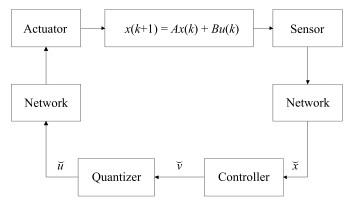
 下载:
下载:

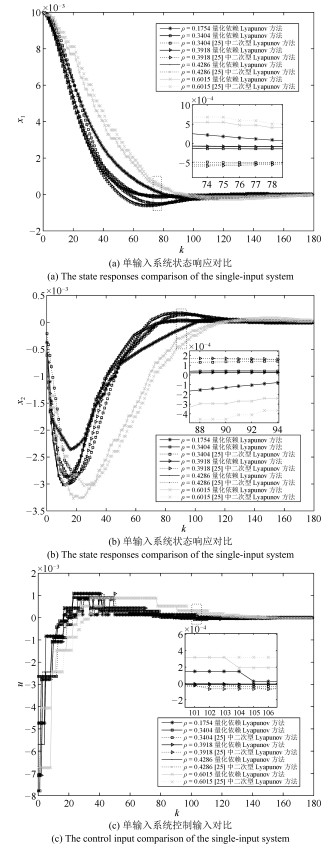
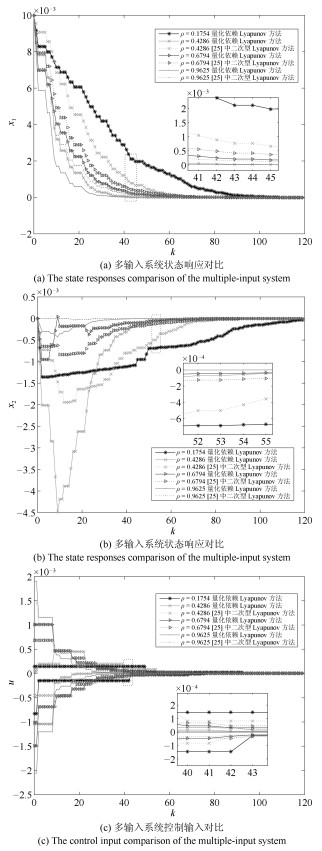
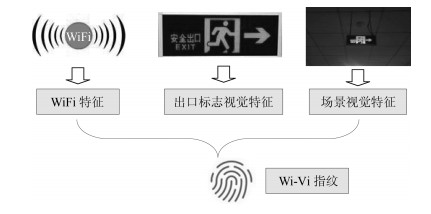
 下载:
下载:
